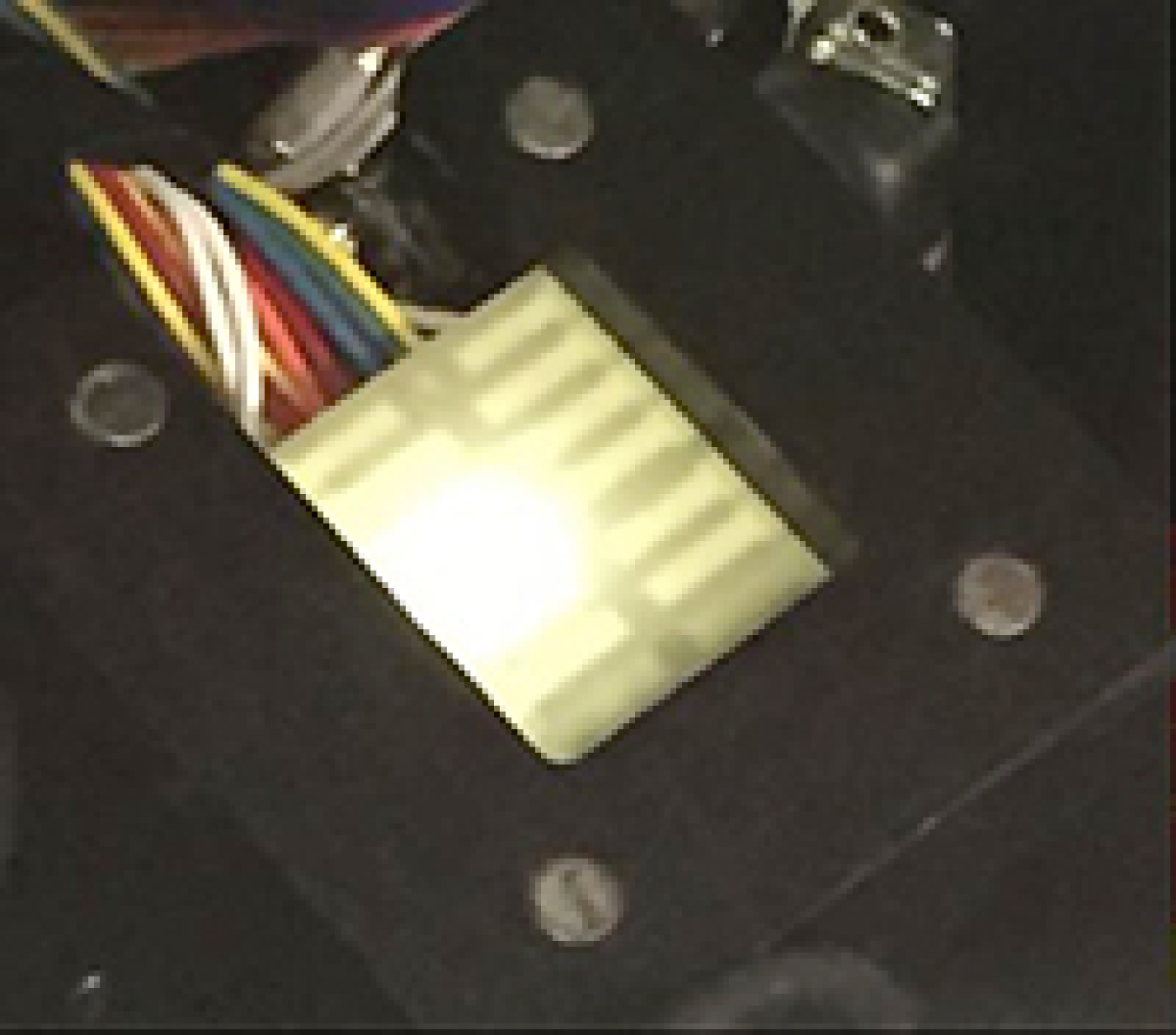
A white OLED with the scattering layer attached to the back of the substrate.
With the desire to shift OLED lighting to flexible substrates come additional challenges that are associated with scattering trapped light, because flexible substrates have higher refractive indices than glass. Princeton University has developed a new thin (~2 μm thick) light-scattering layer, which employs air voids embedded in a high-index polyimide matrix that serves to effectively frustrate the substrate-trapped mode light, which in turn increases the outcoupling efficiency. By exploiting the large index contrast between polyimide and air, efficient scattering-induced outcoupling can be realized. The porous polyimide scattering layers are created through a simple and scalable fabrication technique, using phase inversion, and thus are compatible with production on a large scale.
The outcoupling films were integrated onto a white OLED device on indium tin oxide (ITO) glass, where a 60% enhancement in external quantum efficiency and 78% enhancement in power efficiency were demonstrated. Computer modeling of the device with these porous scattering layers attached calculated an increase in light outcoupling of 65%.
Further benefits can be expected by shifting from glass to flexible substrates, and by removing the ITO layer that can efficiently host waveguide modes. To that end, Princeton has developed transparent electrodes based on silver nanowires embedded within a chemically, thermally, and mechanically stable polyimide substrate. The low roughness achieved by embedding the nanowires into the substrate allows OLEDs to be integrated without shorting, and the devices show improved performance compared to ITO glass controls, due in part to the elimination of ITO waveguide losses. Paths to further improve extraction efficiency are being pursued through the mitigation of surface plasmon losses and by the optimization of silver nanowire networks and porous layers integrated on high-index polyimide substrates. (February 2017)
Return to Research Highlights.

